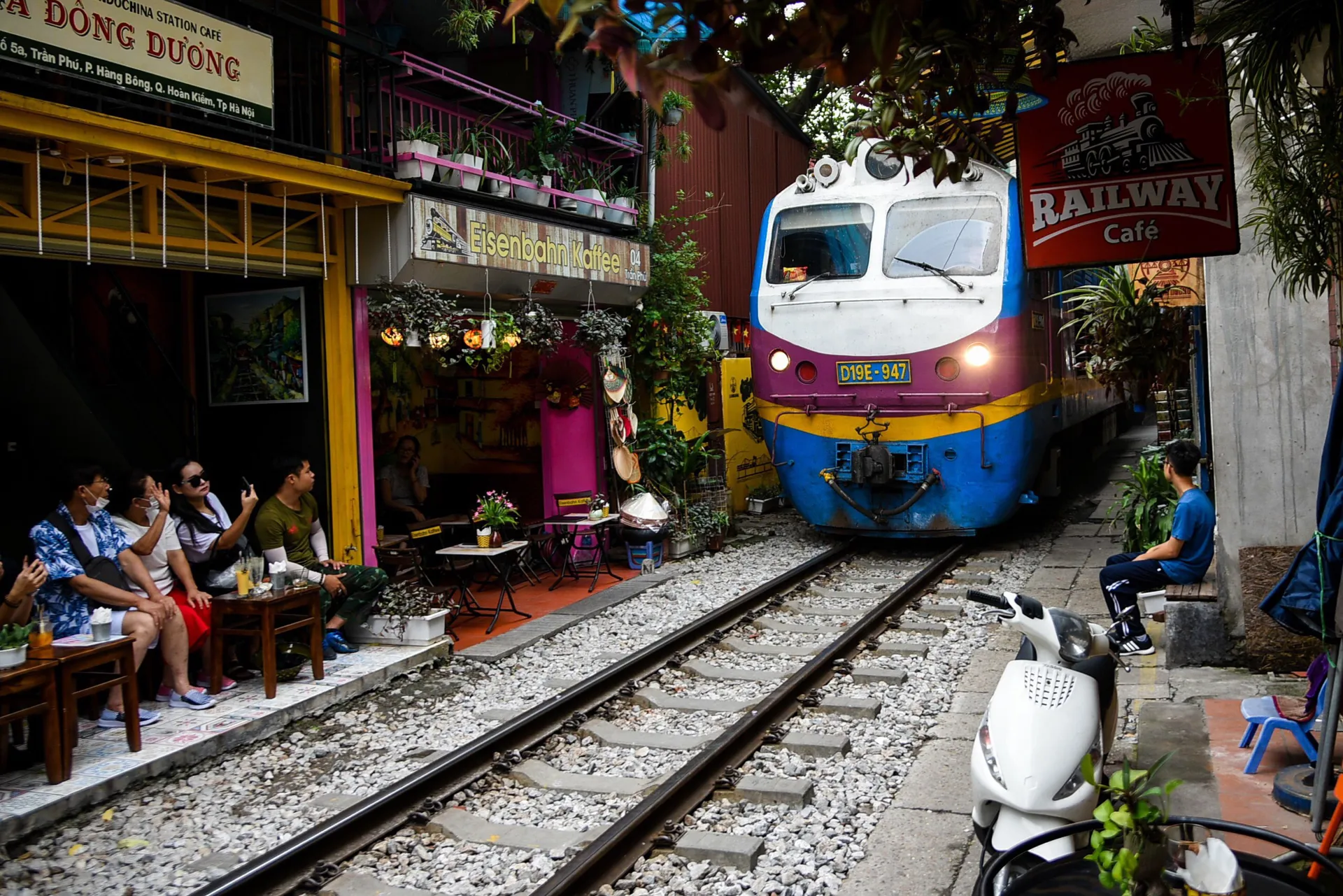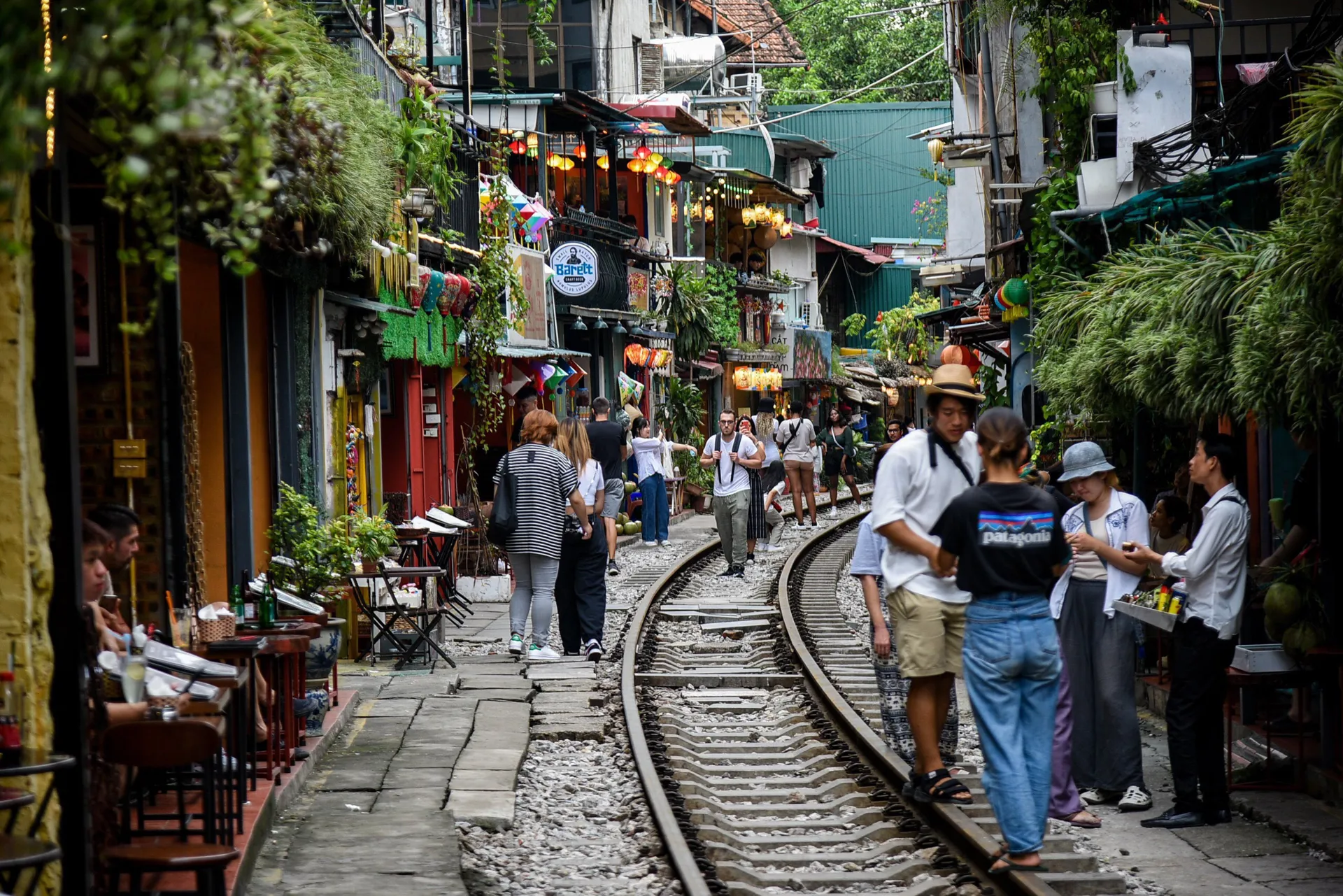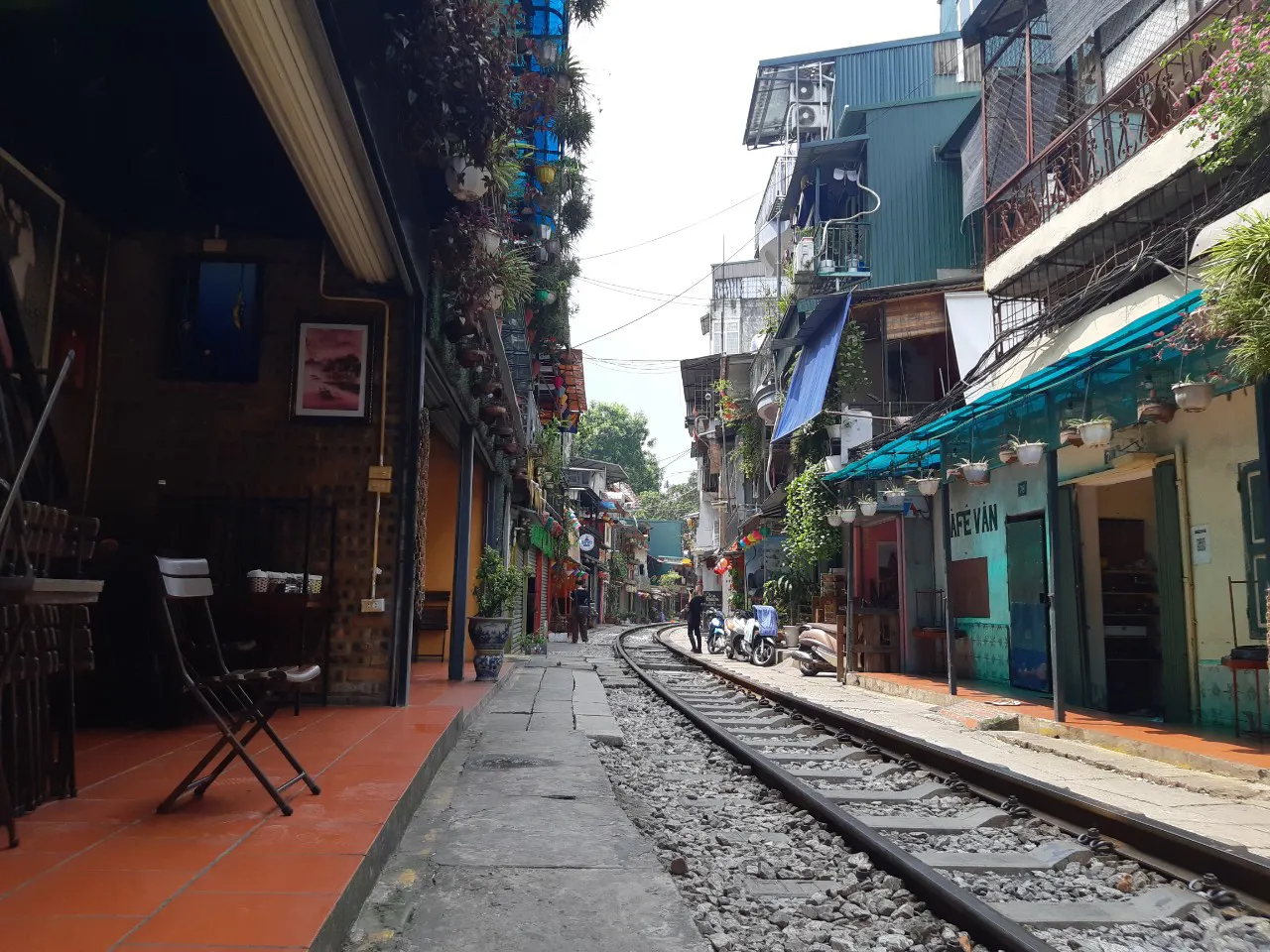Residents want best solution for "Train Street" cafes
After Hoan Kiem district authorities shut down all businesses on the "train street," local coffee shop owners are complaining about the hard times ahead and hoping for a satisfactory solution.
These are the most pleasant days Hanoi is going through, as local tourism is on the mend, and the city has been listed as one of the 12 best places to visit in Autumn by the US news channel CNN.
However, these are the days of worry for the residents who live along the railway stretch running through the wards of Hang Bong and Cua Dong in Hoan Kiem District, making the neighborhoods of the two wards an attractive sight for both Vietnamese and international visitors.
| Some guests take photos of running trains when enjoying coffee on "Train Street". Photo: Khanh Huy |
Seeing the opportunity to improve their income, since 2018, neighbors in the area opened coffee shops aimed at those who want to be thrilled sipping coffee while watching the train pass in front of their eyes, just a few meters away.
Some guests ventured onto the tracks and posed for photos when no train was coming.
Due to railway safety rules, Hoan Kiem District authorities requested the two wards to shut down all business and prohibit visitors from entering the area by September 17 until further notice.
They said that the households and visitors had breached the rules on railway safety as the coffee shops and houses were too close to the tracks.
Nguyen Le Quan, 52, told The Hanoi Times that he could return to his previous job as a freelance electrical engineer, which earned him a maximum of VND10 million (US$422.4) a month.
His wife is a hairdresser who makes around VND60,000 (US$2.5) per hour.
“The coffee shop has brought us so much. It helps me raise my kids and keep my family financially secure,” Quan said.
“If we have to close it down, this time for real, it will be too difficult for us.”
“It’s hard for me to be an engineer again because my hands are not properly functional anymore,” Quan said, with a shake in his fingers.
| Visitors come to the "train street" before the shutdown takes effect. Photo: Khanh Huy |
Quan's family and others used to struggle to make ends meet. So they take out a sizable loan from banks to open a coffee shop on the "train street." The coffee shop cost him about VND500 million but he used to bring his family about VND20-30 million per month, enough to pay off the debt and support the family.
According to Quan, residents have settled in the area since the late 1950s. With houses built along the railroad, people have lived and grown up with trains passing by at any time during the day. They stated that they hardly saw any train accidents here since their childhood.
A few foreign visitors first discovered the neighborhood as a tourist sight in the late 1990s and early 2000s, he said, adding that it was the foreigners who made this area famous on international media. Since 2014, he said that more and more visitors had come here, looking for beyond-compare snapshots for their Instagram and Facebook profiles.
“But it’s not always about the trains,” he said. “Visitors, especially international, want to experience the Vietnamese cultures and enjoy our friendliness.”
“People would think living by the railway is too dangerous, but trains are not the main threat now,” Quan continued.
In recent years, due to the rise of budget airlines and the rapid development of expressways, it has been more accessible for people to travel north and south, and train transport is declining.
Currently, there are only six daily trains from Hanoi to the northern provinces and cities of Hai Phong, Hai Duong, Vinh Phuc, Phu Tho, Yen Bai, and Lao Cai. Most of them depart in the early morning and late at night.
“The train runs slowly through the area, so there’s enough time for us to get out of its way,” he added.
He and other families set up their guards, with someone stationing at the northern side and blowing the whistle when he sees the train coming in. Then all the people will know.
“We do it for our safety. We are very aware that people might get hit by the train. That’s why we always stay alert.”
Yelling at people, pulling them off the railroad, and keeping them behind homemade barricades are the ways people do to ensure their safety, he said.
"They have been doing it for a long time, with coffee shops open or not," Quan said, adding that it is entirely out of people's pure "good thinking, good action."
Foreign visits
The "train street" has made headlines in the local and international media, causing controversy.
On Instagram, there are more than 37,000 posts with the hashtag #trainstreet and 14,000 posts with the hashtag #trainstreethanoi, which indicate an iconic place in the capital city.
Foreign visitors are fond of the neighborhood. “It's very cool. It's very different. It's very stylish. And it's unique,” British tourist Luke Lambert told The Hanoi Times the night before the shutdown.
“You can see why it's a tourist attraction or why people go to it because it is special even if there’s not a train,” Luke said while enjoying the city's night with his fiancée.
The British couple agreed that it is quite dangerous to let people live and do business on the tracks, but since this place is a unique beauty of Hanoi, local authorities should work with the people on the best solution.
Luke said people can still go about their business with "just better safety signage," some lights to warn people of the train's arrival, giving them a few minutes to move away from the tracks and stay behind fences.
| Photo taken on September 15, showing all coffee shops are closed and no tourists enter "Train Street" after the shutdown takes effect. Photo: Hoang Son |
“I can understand why they're doing it [the shutdown]. It's not safe, but it is a way of life for some people,” he said.
“You don’t have this in Europe. And that’s what makes it unique,” Luke said, adding the authorities and people should try to preserve and make the area safer.
Warrick Lawson, an Australian tourist, told The Hanoi Times that people should accept the local government's decision for their safety.
“They could have barriers up. So this place could still function as a business. But you would have to come in… You'd have to be in the place before the train comes past to have a barrier up or something,” Warrick said.
But the local government “should leave it open because it's observation attraction.”
It's a bit harsh for the authorities to order the closure of the area, Quan said, adding that there should be a way to allow the cafes to open while the trains continue to run slowly through here."
“If we have a chance to make this a famous tourist area, we can assure the safety along the tracks,” Quan stressed.
A coffee shop owner, who wants to remain anonymous, told The Hanoi Times that it is a local government decision and people should accept it.
But she hoped the authorities and people would soon find a solution to settle this.













